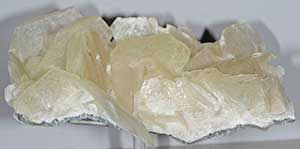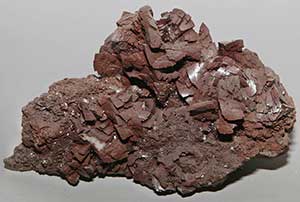 |
| Brucite - Mg(OH)2. |
 |
|
Dolomite - CaMg(CO3)2.
|
Magnesium is the eighth most abundant element and constitutes about 2% of the Earth's crust; it is also the third most plentiful element dissolved in seawater. Although magnesium is found in more than 60 minerals, only brucite, carnallite, dolomite, magnesite, and olivine are of commercial importance. Elemental magnesium (metal) and magnesium compounds are also produced from bitterns, which are waste brines; seawater, and well and lake brines. "Brine" is the term for water that is saltier than seawater. The world's leading producers of magnesium metal, in descending order of output, are China, Canada, and Russia. In the United States, a little magnesium metal is produced from Great Salt Lake brine and the remaining requirement is imported. About one-fourth of the world's output of magnesium metal is consumed in the United States, mainly as a constituent of lightweight aluminum alloys for packaging and transportation applications. Seawater and natural brines accounted for about 60% of U.S. magnesium compounds production. About 65% of the magnesium compounds is used for refractories, which are materials that do not melt or catch fire when exposed to very high temperatures; an example of refractories is the brick lining of furnaces and kilns. The remaining 35% is used in agricultural, chemical construction, environmental, and industrial applications. The United States imports about 40% of its annual needs.